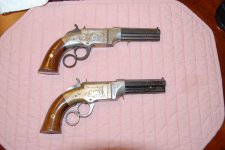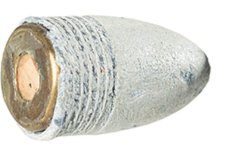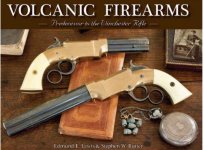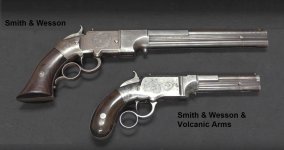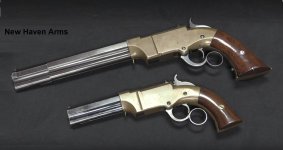Many years ago I went on a search to discover if "anything" (what-so-ever) in the form of documentation, invoices, etc. were left over anywhere, e.g. a local library, museum, or college.
I came up blank. No physical evidence of paperwork of the New Haven Arms company nor the original S&W repeating arms remains.
All we have it the experience of the collectors over the past century who made notes and documented these old pistols.
Norm Flayderman was a pioneer at solid research and documentation of antique firearms. His book was "the" bible.
Looking at it today, Flayderman's STILL remains the "go to" reference but much more data and details on so many antique model firearms have surfaced with the advent of the internet.
The only thing to be remembered is the source and veracity of all of the research and data, old and new. Flayderman's is a good place to start.
Unfortunately, there are still some discrepancies. e.g. silver plating (and remnants of same). I have only encountered silver plating on engraved New Haven pistols. Other collectors, usually the minority, disagree ... especially if they're trying to sell one.

>>> Revision: Or is it that (it was suggested) ALL "engraved" New Havens were silver plated while the non engraved are mostly found in brass but some also silver plated. This research is a work in progress, of course. Basically, there is no way to prove anything except with the physical evidence you currently have in your hand, a trained eye, and high magnification.
The silver plating, over time, if not feather-edge back from handling, wear or polishing ... would just flake off over the years under certain storage conditions.
One of my New Havens had been in a commercial vacuum sealed package since 1962 when I opened it nearly 50 years later.
When first brought to me, I was scared stiff the silver plating might peel off in sheets or disintegrate when I removed the commercial plastic wrap that was still adhered, tightly, to the gun. Removing that old commercial vacuum wrap was a big project to me (more because of caution and fear not to ruin it), taken step by step, very carefully. Fortunately, the vacuum wrap served its intended purpose rather well.
Just something to think about. Sal Raimondi, Sr.







